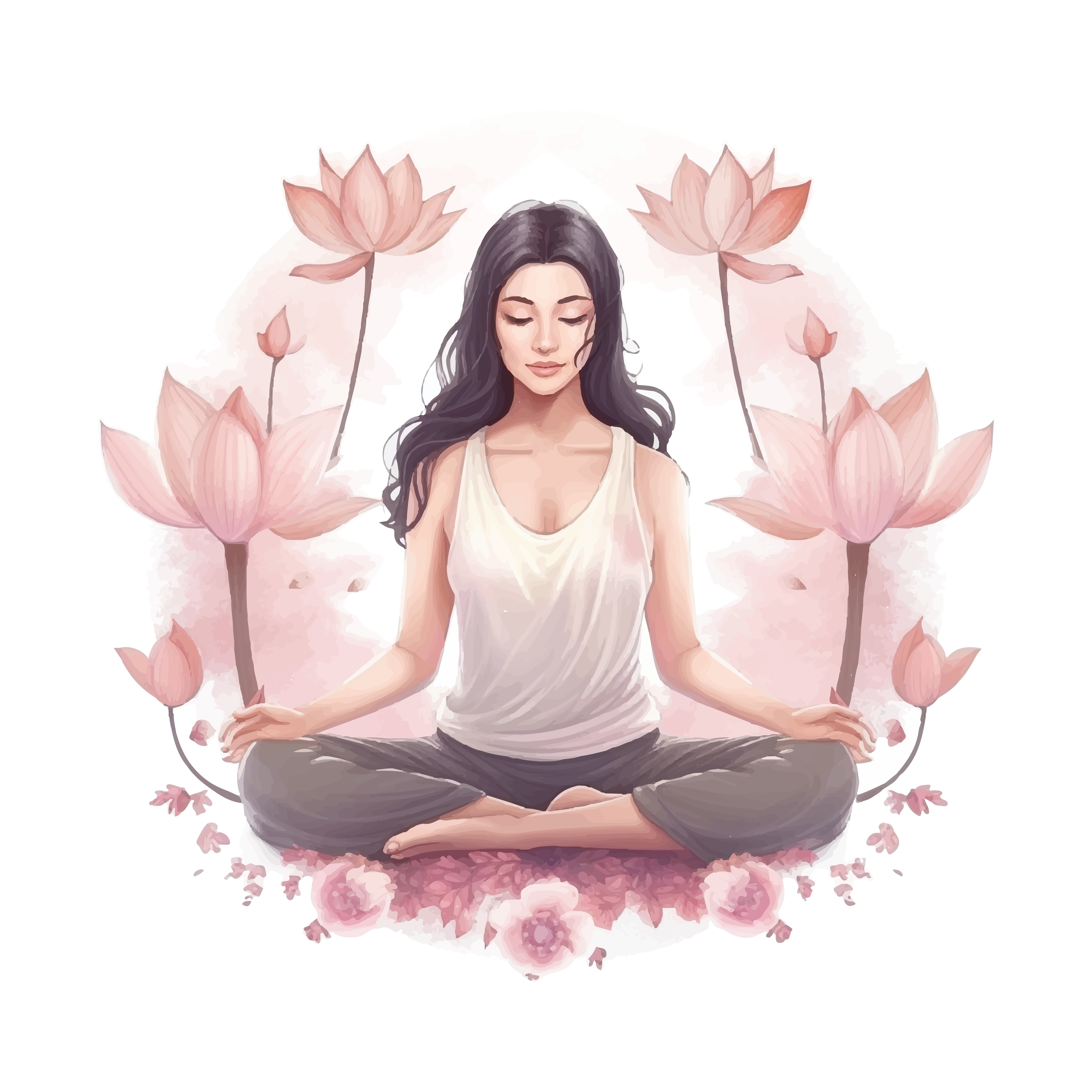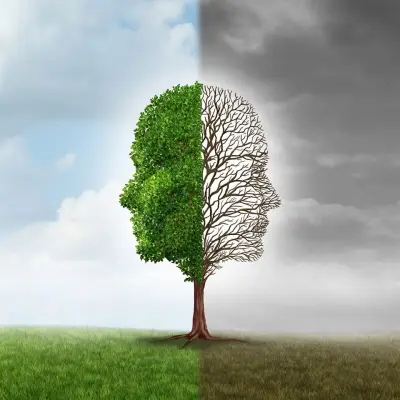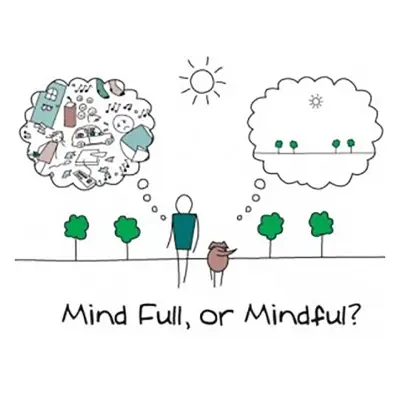Mindfulness and meditation have become popular practices for reducing stress, improving mental health, and enhancing overall well-being. One effective technique within these practices is the full body scan. If you're curious about how to do a full body scan for mindfulness and meditation, this guide will walk you through the steps, benefits, and everything you need to know to get started.
Jump to:
Recommended for you!
Best SellersWhat is a Body Scan in Mindfulness?
The body scan is a mindfulness meditation technique that involves paying close attention to different parts of your body. It helps you become aware of physical sensations, reduce tension, and develop a deeper connection with your body.
Body scanning involves systematically focusing your attention on different areas of your body, usually starting from the toes and moving up to the head. This practice helps you notice sensations, such as tension, warmth, or discomfort, without judgment.
Benefits of a Body Scan Meditation

Body scan meditation offers several benefits for both your mind and body. Here are some key advantages:
- Reduces Anxiety and Stress: Body scanning helps reduce anxiety and stress by shifting attention from anxious thoughts to physical sensations, bringing you into the present moment.
- Enhances Self-Awareness: Body scans promote self-awareness by making you more attuned to your body's signals. This increased awareness can lead to better self-care and a deeper understanding of your emotional and physical needs.
- Improves Sleep Quality: Practising body scan meditation before bed can improve sleep quality. The relaxation and stress reduction achieved through body scanning can help you fall asleep more easily and enjoy a more restful night.
- Relieves Physical Tension: Regular body scan meditation can help identify and relieve physical tension, reducing muscle tightness and promoting overall physical relaxation.
- Boosts Emotional Regulation: By increasing mindfulness and awareness of bodily sensations, body scan meditation can help regulate emotions more effectively, making it easier to manage stress and respond calmly to challenging situations.
- Enhances Focus and Concentration: The practice of focusing on different parts of the body can improve overall concentration and mental clarity, which can be beneficial in daily tasks and professional settings.
- Promotes Overall Well-being: Regular practice of body scan meditation contributes to a sense of overall well-being by fostering a deeper connection between mind and body, promoting a balanced and harmonious state.
How to Do a Full Body Scan Meditation

Now that you understand the benefits, let's dive into the detailed steps of performing a full body scan meditation.
Step 1: Find a Comfortable Position
Start by finding a comfortable position. You can lie down on your back with your legs extended and arms relaxed by your sides, or you can sit comfortably in a chair with your feet flat on the floor. Ensure that your position allows you to remain still for the duration of the meditation. Use a cushion or blanket for additional comfort if needed. The goal is to be relaxed but alert, avoiding the temptation to fall asleep.
Step 2: Close Your Eyes and Breathe
Close your eyes and take a few deep breaths. Focus on the sensation of your breath entering and leaving your body. This helps to centre your mind and prepare for the body scan. Take slow, deep breaths, inhaling through your nose and exhaling through your mouth. Notice the rise and fall of your abdomen with each breath, and allow your mind to settle into the present moment.
Step 3: Begin with Your Toes
Bring your attention to your toes. Notice any sensations you might feel—warmth, tingling, or tension. Spend a few moments here, observing without judgment. Wiggle your toes slightly if it helps you to focus. Imagine your breath flowing down into your toes, bringing relaxation and awareness to this part of your body. Allow any tension to melt away with each exhale.
Step 4: Move Upwards
Slowly shift your focus upwards to your feet, ankles, and calves. Continue to pay attention to any sensations without trying to change them. Notice the contact of your feet with the floor or bed. Move up to your shins and knees, and take note of any tightness or relaxation. Proceed to your thighs, paying attention to how they feel against the surface you are lying or sitting on. Allow yourself to be fully present with each area before moving on.
Step 5: Notice Your Abdomen and Chest
When you reach your abdomen and chest, notice how your breath moves these areas. Pay attention to the rise and fall of your chest with each breath. Feel the expansion and contraction of your ribcage and the subtle movements of your diaphragm. This can be a particularly soothing part of the body scan, as it connects you deeply with your breathing.
Step 6: Focus on Your Shoulders, Arms, and Hands
Shift your attention to your shoulders, arms, and hands. Notice any tension or relaxation in these areas. Allow yourself to feel whatever is present. Your shoulders may hold a lot of tension, so take your time here. Imagine your breath flowing into your shoulders, releasing any tightness. Move down to your upper arms, elbows, forearms, wrists, and finally, your hands. Notice the weight of your arms and the sensations in your palms and fingers.
Step 7: Scan Your Neck and Head
Finally, bring your focus to your neck, jaw, and head. Notice any sensations in your face and scalp. Take your time to explore these areas. Your neck and jaw may also hold tension, so breathe into these areas, allowing any tightness to dissipate. Notice the sensations in your mouth, cheeks, and eyes. Relax your forehead and scalp, letting go of any remaining stress.
Step 8: Take a Moment to Rest
Once you have scanned your entire body, take a few moments to rest in this relaxed state. Notice how your body feels as a whole and take a few deep breaths before slowly opening your eyes. Reflect on the experience, and appreciate the time you have taken for yourself. This moment of rest allows you to integrate the relaxation and awareness you have cultivated during the body scan.
Tips for an Effective Body Scan Meditation

To make the most of your body scan meditation, keep these tips in mind:
Be Patient
It might take some time to get used to body scanning, especially if you're new to mindfulness and meditation. Be patient with yourself and allow the practice to develop naturally. You might find that your mind wanders frequently at first, or that you struggle to notice any sensations. This is completely normal. With consistent practice, you will become more attuned to your body's signals and more adept at maintaining your focus. Remember, mindfulness is about the journey, not the destination.
Practice Regularly
Like any skill, regular practice is key to mastering body scan meditation. Try to incorporate it into your daily routine, even if it's just for a few minutes. Consistency will help reinforce the habit and deepen your mindfulness practice. You could start or end your day with a brief body scan, or fit it in during a break at work. Over time, you'll likely find that it becomes a natural and integral part of your day, offering a much-needed pause and reset.
Use Guided Meditations
If you're unsure where to start, consider using guided meditations. There are many apps and online resources available that can guide you through a body scan meditation. A guided session can provide structure and support, making it easier to stay focused and follow through each step. Popular apps like Headspace, Calm, and Insight Timer offer a variety of body scan meditations suitable for beginners and experienced practitioners alike. Listening to a calm and reassuring voice can also help you relax and immerse yourself fully in the practice.
Create a Calm Environment
Ensure that your environment is quiet and free from distractions. This will help you focus better on the body scan. Choose a space where you feel safe and comfortable, and let others in your household know that you need some uninterrupted time. You might find it helpful to dim the lights, use a comfortable cushion or blanket, and incorporate soothing background sounds or music to enhance your experience.
Stay Gentle and Non-Judgmental
Approach the practice with a gentle and non-judgmental attitude. It's normal for your mind to wander; gently bring your attention back to the body scan whenever this happens. Don't judge yourself for any distractions or difficulty in focusing—mindfulness is about observing without criticism. Over time, you'll develop greater acceptance and kindness towards yourself, which is a core aspect of mindfulness practice.
Experiment with Different Positions
While lying down is a common position for body scan meditation, you can also try sitting or even standing if that feels more comfortable for you. Experiment with different positions to find what works best for your body. The key is to remain comfortable and alert, avoiding the temptation to fall asleep while still allowing your body to relax fully.
Set a Timer
If you're worried about losing track of time, set a gentle timer for your meditation session. This can help you relax fully into the practice without the need to check the clock. Start with shorter sessions, such as 5 or 10 minutes, and gradually increase the duration as you become more comfortable with the practice. Knowing that you have a set time dedicated to mindfulness can also help you commit to regular practice.
How to Do a Body Scan for Anxiety
Body scan meditation can be particularly helpful for managing anxiety. By practising body scanning, you might become more aware of how anxiety manifests in your body, recognising physical signs such as tension or discomfort. This heightened awareness allows you to address anxiety more effectively.
The process also grounds you in the present moment, shifting your focus away from worries about the future or dwelling on the past. By concentrating on the sensations in your body, you can reduce the power of anxious thoughts and foster a sense of calm and stability.
Recommended for you!
Best SellersFrequently Asked Questions About Body Scan Meditation
What is the Difference Between Meditation and Body Scan?
Meditation is a broad practice that encompasses various techniques, including body scan. Body scan meditation specifically focuses on physical sensations and body awareness, while other forms of meditation might focus on the breath, thoughts, or visualisation.
How Long Should a Body Scan Meditation Be?
A body scan meditation can last anywhere from 5 to 45 minutes. Beginners might start with shorter sessions and gradually increase the duration as they become more comfortable with the practice.
How to Do a Body Scan in DBT?
In Dialectical Behaviour Therapy (DBT), body scan meditation is used as a mindfulness skill to help people manage emotions and reduce stress. The process is similar to the steps outlined above, with an emphasis on non-judgmental awareness.
What is Body Scan in CBT?
In Cognitive Behavioural Therapy (CBT), body scan meditation is used to help people become more aware of their physical sensations and how these relate to their thoughts and emotions. It encourages a non-judgmental awareness that can help in identifying and managing stress and anxiety.
How Can You Do a Body Scan with Clients?
If you're a therapist or coach, you can guide your clients through a body scan meditation by providing clear instructions and a calm, reassuring presence. Encourage them to notice sensations without judgment and to breathe deeply throughout the process.
How Do You Practice Mindful Breathing and Body Scan Together?
To practice mindful breathing and body scan together, start by focusing on your breath to centre your mind. Then, as you move through the body scan, continue to breathe deeply and steadily, using your breath to enhance your awareness of each body part.
How Do You Feel After Body Scan Meditation?
Many people report feeling relaxed, grounded, and more in tune with their bodies after a body scan meditation. There can also be a noticeable reduction in physical tension and mental clarity.
How Can Body Scan Meditation Help with Sleep?
Practising body scan meditation before bed can improve sleep quality by helping you relax and reduce stress. The focus on bodily sensations can calm a racing mind and prepare your body for restful sleep.
Master Meditation for £29
If you're interested in learning more about mindfulness and meditation, consider enrolling in the Meditation Diploma Course with Centre of Excellence. For a limited time, you can access this fascinating course for a discounted price of £29.












